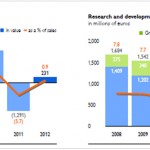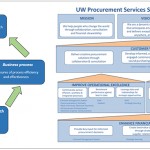The Balanced Scorecard of Philips

Philips
A recent study suggests that more than half of the Fortune 1000 companies still use the Balanced Scorecard, after over 20 years since it was brought into existence by researchers David Kaplan and Robert Norton. One of these big names is Philips, the worldwide-known electronics company.
Although many companies try to adapt their business to a possible one-size-fits-all Balanced Scorecard model, Philips has developed its own unique way of using the tool.
In what follows, we will look at how the company has altered the BSC to fit and complement its own purposes, using the system to further enhance its position on the market.
At Philips, their focus is on their employees: ensuring that every employee has a clear understanding of what is expected of them in order to raise through the company ranks and what are the required driving factors behind creating a bigger and better organization.
In other words, the Balanced Scorecard is used in such a fashion that its employees understand the company’s strategic policies and its long-term vision.
They operationalize four critical success factors, so as to find balance between indicators that measure lab work, operations, market, and business success. Underneath these critical success factors, we also find six key indicators:
- Competence – knowledge, technology, leadership, and teamwork
Indicators: organizational development and Information Technology support
- Processes – drivers for performance
Indicator: operational excellence
- Customers – value propositions
Indicators: customer and employee satisfaction
- Financial – value, growth, and productivity
Indicator: profitable revenue growth
Philips uses these critical success factors to link short-term goals with long-term goals, offering their employees an in-depth understanding of how each individual’s actions contribute to the company’s overall success and how every employee can help with achieving the set organizational goals.

report
In addition to these factors and indicators, the company also uses a four-level card review system in its BSC framework: the strategy review, operations review, business unit review, and individual employee review, lined up from top to bottom.
The lower level cards must be in line with the top leveled ones, ensuring that all the members of staff understand how to achieve the more complex organizational goals by first completing less complex goals.
The company’s leaders believe that by implementing the Balanced Scorecard, their workers get a proper grasp of the factors that make the business grow.
Furthermore, another great strength of the BSC is that it creates a more streamlined communication system between each employee, enabling them to share with their peers any success practices, tried-and-tested product fixes, information on current projects, or more personal details, such as individual strengths and weaknesses.
Consequently, by maintaining a clear communication channel, the chances of making the same mistake twice are quite low, allowing both the employees and company to save and allocate time and money for more pressing issues.
It’s no surprise that Philips was and is still seen as one of the best companies to work for, as they have achieved quite the success story by individualizing the implementation of their BSC. In creating smaller goals to achieve a bigger target, their employees now know how their job affects the fate of the corporation.
As can be clearly seen, the electronics company has managed to successfully use the Balanced Scorecard as a multi-level business measurement tool, by fully exploiting one of the key strengths of this instrument – its adaptability.
By using the BSC in this particular manner, they have been able to maintain a direct, streamlined, and clear communication channel between their people, goals, values, and the organizational framework of the company itself.
Image sources:

Tags: Balanced Scorecard, Performance Management, Philips





